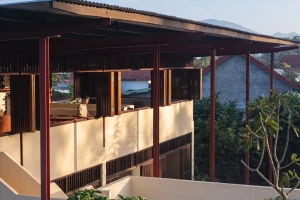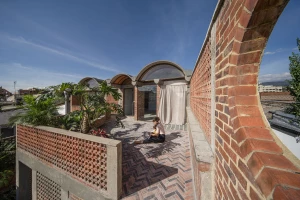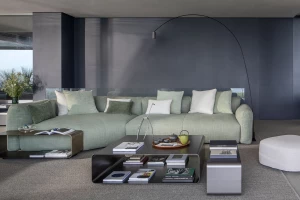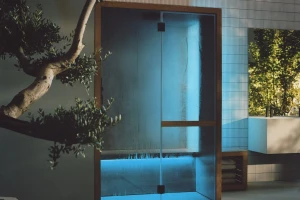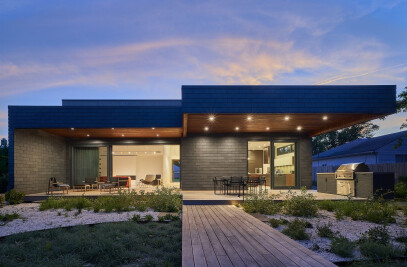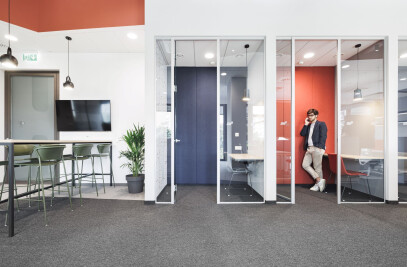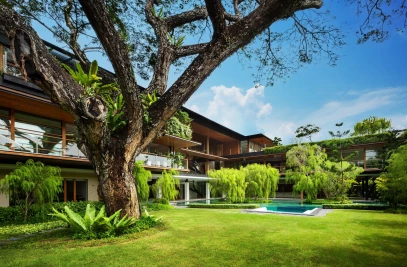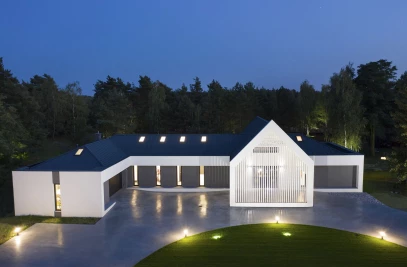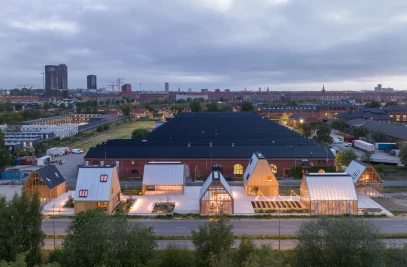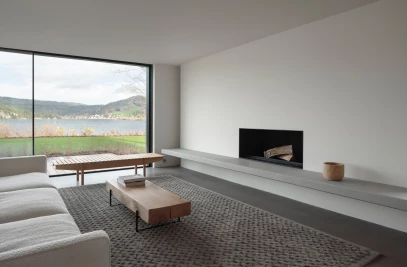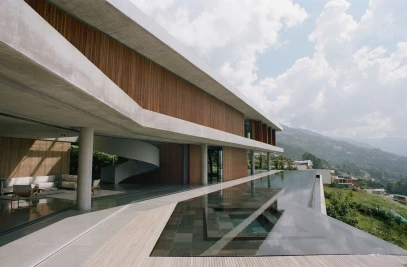The new Louvre Conservation Center by Rogers Stirk Harbour + Partners will concentrate 250,000 works of art that are now distributed over 60 different locations around France. The building is sensitively dug into the landscape and takes advantage of the natural slope in the terrain. It is located in Liévin in northern France next to Sanaa’s recently opened Louvre-Lens.

At the front of the facility double height glazing brings light into the conservation studio’s. On the other side a sequence of storage spaces are housed beneath an arched roof. All the services are integrated into a double exterior wall, freeing up the collection spaces. The conservation and storage center will add 20,000 square metres of storage capacity to the Louvre archive.

Cutting-edge technology combined with the thermal mass of the soil the building is dug into will make sure the building has a proper climate to conserve the Louvre’s collections. The landscape design integrated water management in the form of re-use and minimizing flood risk. The vehicle access is submerged and separated from employee entry of the researchers, curators and scientists.

More from the Architects:
RSHP won an international competition to design a new collections facility for the Louvre in 2015. The facility is designed to integrate storage and conservation of more than 250,000 works of art that are currently distributed between 60 different locations around France. The winning proposals create an environmentally sensitive and elegantly understated facility emerging from the landscape.
The conservation and storage centre, comprising 20,000 square metres of space, is located in Liévin in northern France, alongside the recently opened Louvre-Lens by Sanaa architects.

Taking advantage of the natural slope in the terrain, the building emerges seamlessly from the landscape, defined by two pairs of concrete walls, reminiscent of the French military architecture of Vauban. Its green roof forms a gently-sloped visual extension to the Louvre Lens park, and a link in a green arc connecting Liévin to Lens itself.

The facility provides a counterpoint to the transparent and ephemeral museum building, exploring the expressive potential of what is hidden and what is revealed. At the front of the building, double height windows bring light into study and conservation workspaces, with a mezzanine floor for offices at one end. As well as enhancing the working environment, these windows allow glimpses through the trees into the inner workings of this private facility and create a buffer zone between storage spaces and street. Sliding screens allow for additional flexibility of use and separate these workspaces from a top-lit central corridor – the internal ‘artworks boulevard’ of the building and its principal circulation space.

On the other side of this circulation space, a sequence of storage spaces beneath an arched roof are arranged on a single level and reduce in height from six metres to three metres, in a direct response to the needs of the collection. All services are housed in the twin exterior walls, keeping the collection spaces completely clear.

Cutting edge technology works with the thermal mass provided by the surrounding soil to ensure stable and optimal climatic conditions for the storage of art and minimum environmental impact of the building. Water management is also fully integrated into the landscape design, to maximise re-use and to minimise flood risk.

Vehicle access is submerged below the landscaping, enabling easy loading and unloading of artworks from lorries, and ensuring segregation of access for goods vehicles and users of the facility (researchers, curators and scientists).















